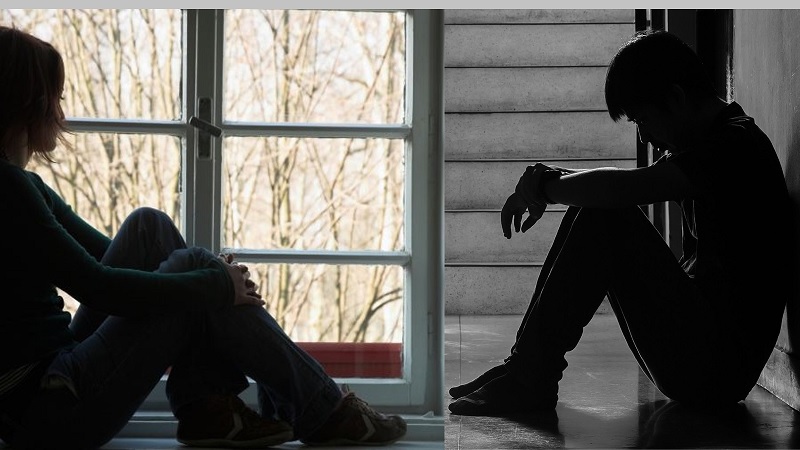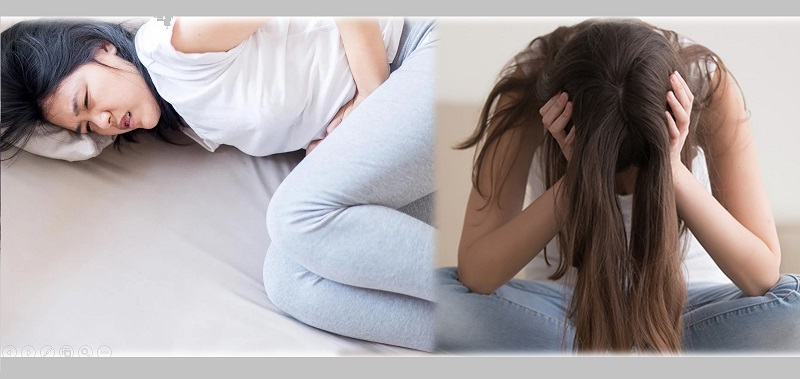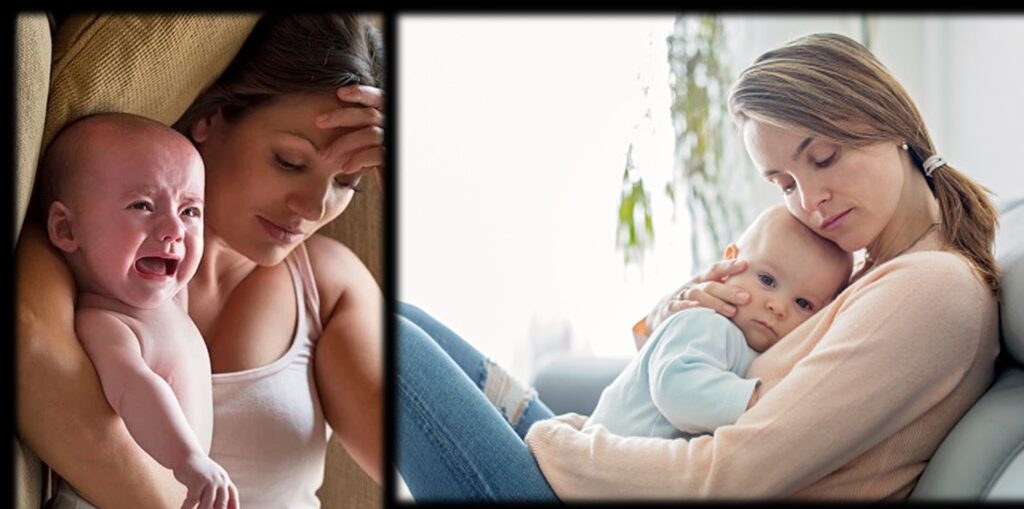Depression in women is very common. Women are more vulnerable to experiencing mild, moderate, or severe symptoms of depression.

What is depression?
Depression is a common health problem that causes persistent feelings of sadness and loss of interest in life’s activities. Depression is actually a mental health condition which is affecting both males and females. It is an entirely different situation from normal mood fluctuations that people regularly experience in daily life. It affects how you feel, think and behave and can lead to a variety of emotional and physical problems.
Escalating Rate of Depression in Women
According to a study, about twice as many women as men suffer from depression. Up to 1 in 4 women are likely to have an episode of major depression at some point in their lives.
Why is the depression rate higher in women than in men?
Recent research, exploring emotional intelligence, suggests that males have the ability of stress tolerance, assertiveness, and self-regard at a greater rate than women. Moreover, the brain chemistry of women is more sensitive than their opposite gender which makes them more likely to be depressed even by less disturbing events. Such differences play an important role in escalating the rate of depression in women.

A chart comparing causes, symptoms, and patterns of depression in men and women
| Causes/Symptoms | Depression in Women | Depression in Men |
|---|---|---|
| Common Causes | Fluctuating hormone levels Pregnancy and labor Menstruation Menopause Birth control/ hormone replacement therapy side effects Lifestyle or work challenges or other life stressors | UnemploymentWorkplace stress Challenging life events (e.g, loss of job, death of some dear one, etc.) Rough sleeping Being victims of violent crime |
| Common Emotional Symptoms | Guilt Worthlessness Hopelessness Anhedonia (inability to feel joy) Mood swings | Anger.Irritability Restlessness. |
| Common Behavioral Symptoms | Crying for no apparent reason Decreased appetite Suicide attempts | Excessive alcohol/drug use. Risky behavior Suicide completion |
| Depression Patterns | Higher rates of seasonal depression About one in four women experience a common mental health issue Women are twice as likely to be diagnosed with anxiety as men 25.7% of women aged 16 to 24 self-harm. | Three times as many men as women die by suicide. One in eight men experiences a common mental health issue Men have a greater ability of stress tolerance 9.7% of men aged 16 to 24 self-harms. |
There are many genetic, hormonal, psychological, and social factors that come into play in the cause of depression in women.
May puberty cause depression in girls?
A fact about depression reveals that sometime puberty changes may cause depression in females. Puberty is a period of physical and emotional change in the life of a boy or a girl. During this, secondary sex characteristics are merged. Puberty particularly presents girls with a number of physical and emotional challenges. Also, females typically reach the age of puberty before males do. So it is harder for girls to cope with the challenges of the new era of life than boys. Therefore, girls are more prone to depression or other mental health problems.
Girls at an early age are also at increased risk for a number of psychosocial problems, including depression. Some research suggests that early puberty can exacerbate the problems associated with early adversity, increasing the risk of depression and other mental health problems.

Is hormonal fluctuation a reason for depression in women?
Hormonal fluctuation may be a major cause of depression in women. Some experts believe that women’s higher likelihood of depression may be related to changes in hormone levels that occur throughout a woman’s life. Various hormones are secreted in a female’s body which is responsible for the relaxation of the mind and body.
Progesterone is one of them which is often called a “relaxation hormone” as it produces calming effect when it is produced at an optimal level. But when hormones are off-kilter, it can lead to brain fog, anxiety at a high level, irritability as well as depression. In the same way changes in hormones also occur at various other stages including menopause, childbirth, thyroid problem, and some other diseases.
Premenstrual Syndrome (PMS)
Premenstrual syndrome (PMS) may be another cause of depression in women. PMS is a very common problem. PMS has a wide variety of signs and symptoms, including mood swings, breast tenderness, food cravings, fatigue, irritability, and depression. It is estimated that nearly 48 percent of women who are of reproductive age suffer from PMS, and about 20 percent of them have symptoms severe enough to affect their regular routine.
Other Causes of Depression in Women
There may be many factors influencing mental health that in the end become major causes of depression.
Some Common Causes of Depression in Women
- Loss of a loved one person from life.
- Environmental issues
- Work problems
- Financial stress
- Major changes in life
- Genetic issue
- Exposure to trauma or lack of social support
- Negative behavior of surroundings such as family, friends, society, etc
- Alcohol or substance abuse
- Thyroid disorders
- Having a mother with a history of the disorder
- Any type of complex
- Social Problems
- Marital/Relationship problems
- Lack of Excercise
Types of Depression in Women
1- Premenstrual Dysphoric Disorder (PMDD)
This type of depression is tied to a woman’s menstrual cycle. Premenstrual dysphoric disorder (PMDD) is a condition in which a woman experiences severe symptoms of depression, irritability, and tension before her period. Symptoms of depression are severe enough to negatively affect interpersonal relationships and disrupt daily activities.

2- Postpartum Depression:
Postpartum depression is another type of depression that usually occurs after giving birth to a child. Mostly, women feel sad and hopeless after and during pregnancy. These irritating conditions are also named “baby blues as we know that body and mind go through complex changes during and after pregnancy and during this if you have the above-mentioned baby blues then you are in postpartum depression. The time period of postpartum depression varies for different mothers. Sometimes it goes away within days after birth and sometimes it is prolonged and then proper medication and therapy are required.
More on Postpartum Depression

3- Clinical Depression/Major Depression:
Clinical depression, also known as major depression, is a severe type of depression that affects the way you feel and think rather it alters your behavior and leads to a variety of emotional and physical problems. Clinical depression because of its severity also called a major depressive disorder. With major depression, it can be difficult to study, work, sleep, eat, and enjoy friends and other routine activities. According to a study, about 25% to 30% of women suffer from major depression at some point in their lives.
Signs of depression in Women:
Here are some common symptoms of depression ;
- Overwhelming sadness
- Grief
- Sense of guilt
- It may be described as a feeling of loneliness and hopelessness
- The feeling of being out of control
- Inability to concentrate on things and short-term memory issues
- Loss of interest in pleasurable activities of life
- Sudden swings in mood
- Panic attacks
- Feelings of exhaustion
Damaging Effects of Depression on Women
Effect of Depression in Women on the Reproductive System:
Stress can even lower the activity of the hypothalamic-pituitary-gonadal axis which is the controlling part of the reproductive system. In this way, there may occur disruption in the connection between the brain and ovaries. Prolactin, adrenal steroids, endorphins, catecholamines, and serotonin all affect ovulation and in turn, all are affected by stress and depression. History also shows that depressed women are twice as likely to experience infertility.
Effect of depression on the family of a depressed person:
Mental illness often has a “ripple effect” on families, creating tension, uncertainty, stress, and sometimes significant changes in how people live their lives. Different family members are likely to be affected in different ways as depression puts strain on the family of that depressed person. family members also commonly experience feelings of fear and anxiety about a loved one’s depression. In this way, the other members of the family are indirectly affected by depression.
Damaging effects of depression on the brain:
There is growing evidence that several parts of the brain shrink in people who are suffering from depression. Specifically, these affected (shrank)areas lose grey matter volume. This loss of grey matter volume(GMV) is at a peak level in people who have regular or ongoing depression with serious symptoms.
Suicidal thoughts due to depression:
Depression causes a high risk of suicide. Suicide is the second leading cause of death in young people. A major cause of suicide is mental illness, very commonly depression. People feeling suicidal are overwhelmed by painful emotions and see that the only solution to their all issues is death. That’s why they encourage themselves for suicide. People who commit suicide don’t want to die, but to end their pain. Depression causes a sudden lift in the psyche of depressed people which can be a warning sign that they are planning to kill themselves as they think suicide is a permanent solution to temporary problems.

Effects of depression on society:
Depression is a major cause of disability worldwide and a contributor to the overall burden of disease. More women are vulnerable to depression than men as depression is so prevalent, that all social workers regardless of their practice setting and specialization must be familiar with various aspects of the syndrome. Not now but depression has been a crucial social problem throughout history. Mental health disorders can have considerable effects on all aspects of life, such as work performance at offices or school, relationships with family and friends, and people losing their interest to participate in activities of the community. These two major mental health issues, depression, and anxiety cost the global economy US$ 1 trillion per annum.
Preventive measures to reduce depression:
If you’ve had depression before, you may be at risk to be suffered from it again. You can prevent depression by getting enough adequate sleep, eating a healthy diet, avoiding caffeine (which is a well-known anxiety inducer and also alcohol), etc.
1- Healthy Diet:
Consumption of a healthy diet reduces depression. A healthy diet may help as part of your overall treatment. Unfortunately, there is no particular diet that we can say relieves depression completely. Still, eating certain eating diet foods permit your brain to produce the feel-good neurotransmitter serotonin which is stimulated by carbohydrate-rich food.
2- Excercise can reduce depression:
Regular exercise is the best thing you can do for mental health because body temperature is increased during exercise which produces a calming effect in the central nervous system and releases mood booster chemicals such as endorphins etc.
3- Adequate sleep:
Getting ideal sleep of almost 8 hours is necessary for physical as well as mental freshness. According to National Sleep Foundation, people with quaint sleep (insomnia) have a tenfold risk of depression.
Treatment of depression in women:
Depression is not incurable. It is best to seek treatment right away if you are suffering from depression to improve your quality of life. The first action you must take is to visit your personal doctor or mental health professional. They will ask you a series of questions and perform tests to indicate the root cause of depression and its stages so you must not hesitate in answering them.
There are two most common treatment options for women suffering from depression:
- Depression medication
- Depression therapies
Your doctor may recommend some antidepressants to help you manage and ease the symptoms of your depression. Cognitive behavioral therapy (CBT) is one of the most common psychological therapies for treating depression. With the help of therapies, women can understand difficult relationships and ways to improve them, and how to change habits that may be the cause of their depression.
Depression medication – Treatment of depression by antidepressants:
Antidepressants are prescription drugs to treat depression. They are not permanent solutions to depression, but they can help alleviate the symptoms of depression by correcting the balance of neurotransmitters in the brain that are responsible for mood swings.

For more details, go to Use of Antidepressants and their side effects.
Side Effects of Antidepressants
Despite being used as a treatment for depression, these are life-shortening drugs. The analysis found that in the general population, people who took antidepressants were 33 percent more likely to die than people who did not take antidepressants.
Therapies for the treatment of depression:
1- Cognitive behavioral therapy:
CBT helps an individual identify and change negative thoughts and related behaviors. People suffering from depression often struggle with negative thought patterns. These thought patterns. can influence our behavior.
2- Interpersonal psychotherapy :
Interpersonal psychotherapy is a brief, attachment-focused psychotherapy that aims at solving interpersonal problems and recovery of patients from depression. This therapy is mostly intended to be completed within 12-16 weeks if it is not stopped abruptly.
3- Psychodynamic therapy:
Psychodynamic therapy is an approach that involves the facilitation of a deeper understanding of one’s emotions. It works to help people gain better insight into how they feel and think. By improvement of this understanding, people can then make better choices about their lives. Psychodynamic therapy focuses on unconscious processes as they are manifested in the client’s present behavior.
Physical impacts of depression and findings about depression:
Some physical effects are quaint sleep habits, loss of appetite(or increased rate of appetite with typical depression), constant fatigue, muscle aches, back pain, headache, etc. Major depression can damage a person’s social and physical functioning even more severely than serious medical conditions such as hypertension, arthritis, diabetes, etc, and can result in disability and significant loss of income, according to research cited in the report.
Furthermore, a World Health Organization report examining ” The Global Burden of Disease” found that depression presents the greatest disease burden for women when compared with other diseases. Some other findings that examine the possible culprits of depression are;
- Genetic factors
- Sex hormones
- Life stress and trauma
- Interpersonal relationships and cognitive styles.
